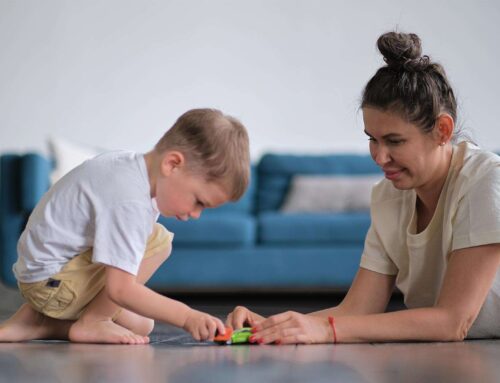Toilet training is a significant milestone for every child, yet it can present unique challenges for those with autism spectrum disorder (ASD). Parents and caregivers often find themselves seeking effective strategies tailored to the specific needs of autistic children. Understanding the intricacies of this process and implementing evidence-based techniques can greatly facilitate the toilet training journey. In this blog post, we’ll explore some practical approaches to help parents navigate this important developmental phase.
Consistency and Routine: Consistency is key when it comes to toilet training autistic children. Establishing a predictable routine can provide a sense of stability and familiarity, which is particularly important for individuals with ASD who thrive on routine. Consistently scheduling bathroom breaks at regular intervals throughout the day can help reinforce the habit of using the toilet.
Visual Supports: Visual supports such as picture schedules, social stories, and visual timers can be invaluable tools in toilet training autistic children. These visual aids can help clarify expectations, reduce anxiety, and enhance understanding of the toilet training process. Creating a visual schedule outlining the steps involved in using the toilet can help make the process more predictable and manageable for the child.
Sensory Considerations: Many autistic children have sensory sensitivities that can impact their experience with toilet training. It’s essential to consider these sensitivities and make necessary accommodations to create a comfortable environment. This may involve providing sensory-friendly toileting materials, such as soft toilet paper or fragrance-free wipes, and addressing any sensory triggers that may arise during the process.
Positive Reinforcement: Positive reinforcement is a powerful motivator for children with ASD. Praising and rewarding the child for successful toileting behaviors can help reinforce the desired actions and increase motivation to continue progressing. Rewards can be tailored to the individual child’s preferences and may include verbal praise, stickers, small toys, or other incentives.
Patience and Flexibility: Toilet training is a gradual process that requires patience and flexibility. It’s essential to approach the process with realistic expectations and be prepared for setbacks along the way. Some autistic children may take longer to master toileting skills, and that’s okay. Celebrate small victories and remain patient and supportive throughout the journey.
Gradual Exposure: For some autistic children, the transition to using the toilet independently may be overwhelming. Gradual exposure to the toilet environment and toileting routines can help desensitize the child and build confidence over time. Start by introducing the child to the toilet in a non-threatening way, such as sitting fully clothed on the toilet seat, before gradually progressing to more advanced steps.
Consultation with Professionals: If you’re struggling with toilet training your autistic child, don’t hesitate to seek guidance from professionals with expertise in autism and developmental disorders. Pediatricians, occupational therapists, and behavioral therapists can offer valuable insights and support to help address specific challenges and tailor strategies to meet your child’s needs.
In conclusion, toilet training autistic children requires patience, understanding, and a tailored approach that takes into account their unique strengths and challenges. By implementing consistent routines, utilizing visual supports, considering sensory sensitivities, providing positive reinforcement, and seeking professional guidance when needed, parents and caregivers can help their autistic children successfully navigate this important developmental milestone. With dedication and support, toilet training can become a manageable and rewarding experience for both the child and their caregivers.





Leave A Comment